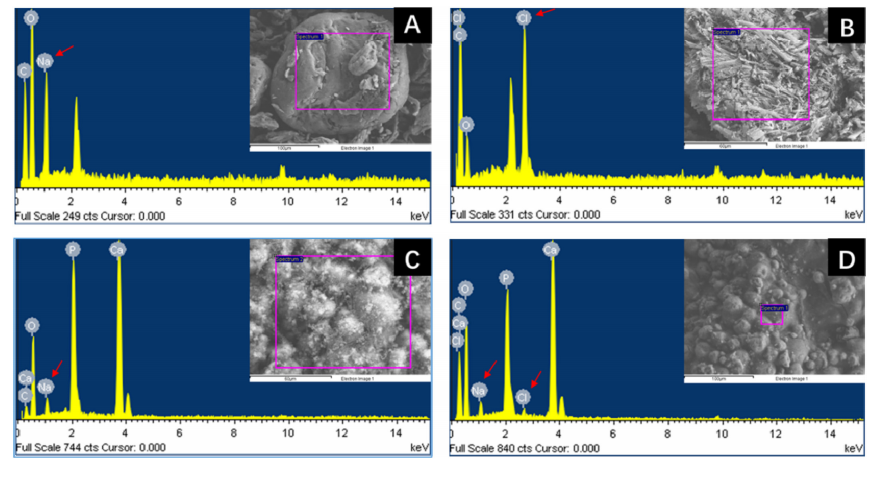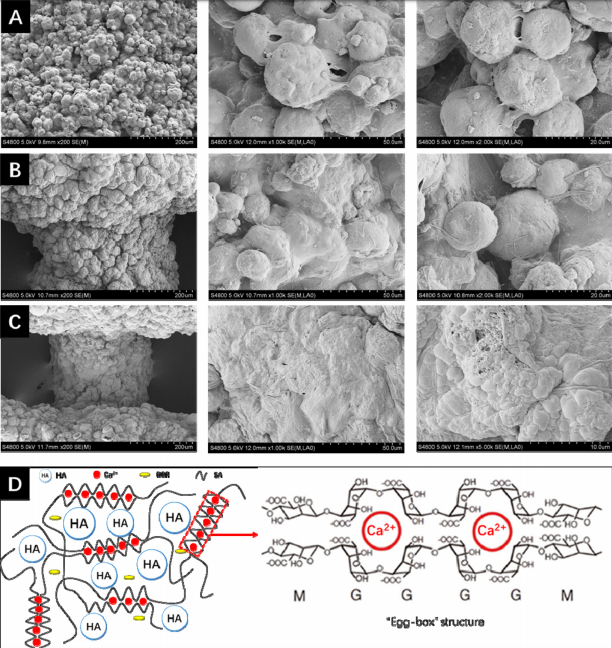Researchers from Sichuan University in China are exploring improved methods in bioprinting, outlining their findings in the recently published ‘3D printing of calcium phosphate scaffolds with controlled release of antibacterial functions for jaw bone repair.’
3D printing—and more specifically, bioprinting—have been associated with both bone regeneration efforts for patients dealing with a wide range of health conditions, as well as recovering from surgery to the mandible requiring subsequent implants and grafting. Bone regeneration is known to be a challenging area of medicine, and in bioprinting with different scaffolds and structures the difficulty is often in sustaining cell growth and viability in tissue engineering. The scaffolds created for this study promote patient-specific treatment in bone regeneration with antibacterial properties added to the structure.
The research team used a combination of calcium phosphate powders and berberine to make the bioink to create porous scaffolds via direct extrusion 3D printing. From the outset, they realized the scaffolds would require the following critical features:
- Composition similar to human tissue
- Stable structure like human tissue
- Suitable mechanical properties
- Ability to sustain growth and reproduction of seed cells
“3D printing technology provides a versatile strategy to fabricate complex scaffolds based on the principle of layer-by-layer accumulation,” explained the researchers. “Bone tissues have a complex porous structure, which is suitable for manufacturing with 3D printing technology.”
While numerous studies have revealed the use of successful implants (for example, porous titanium), scientists still seek to overcome obstacles in jaw repair and bone generation—centered around a better need for customized care and prevention of infection in the ‘oral environment.’ Calcium phosphate (Ca\\P) is a good prospect as a material for use in bone regeneration due to:
- Required level of biocompatibility
- Osteo-induction properties
- Ability to achieve chemical bonding with tissue
- Solubility within the human body
Berberine also has numerous qualities which make it conducive to bone regeneration and healing due to its antibacterial qualities. An alkaloid harvested from plants like astragalus and more, berberine has been used to improve the immune system, blood circulation, nutrient absorption, and decrease inflammation. It is also used to treat osteoporosis but can be ‘malabsorbed and has serious side effects.’

Selected calcium phosphate powders for making printing inks. (A) Surface morphology of BCP scaffold. (B) Particle size distribution of BCP powder. (C) Surface morphology of HA scaffold. (D) Particle size distribution of HA powders.
For this study, 3D printed scaffolds were used for controlled release of antibacterial properties to help regenerate the jaw tissue. The researchers used hydroxyapatite (HA) and Biphasic calcium phosphate (BCP, β-TCP:HA = 1:1 in Wt %) powders, also loading the scaffolds with berberine. They tested the materials in terms of mechanical properties, drug release properties, swelling rate characterization, and the in vitro cytotoxicity test.
During analysis of the hydroxyapatite particles, the research team discovered an ‘isolation situation,’ with poor linking of particles that could further lead to inferior mechanical strength and increased swelling. The cross-linked scaffold showed ‘a large number of’ fibrous structures though, along with multi-level porous structures. They also noted two stages regarding shrinkage as 4.6% occurred during cross-linking, and 19.8% occurred during freeze-drying.
“… the mechanical and swelling test indicated the scaffolds have enough structural stability for supporting implantation,” stated the researchers.
Further analysis also showed that berberine was ‘successfully loaded’ onto the scaffolds, controlled through the number of drugs loaded, and porosity.

EDS results of different 3D printed scaffolds. (A) pure sodium alginate (SA) powders; (B) pure berberine (BBR) powder; (C) 3D printed (HA + SA-BBR) scaffolds; (D) 3D printed (HA + SA + BBR) scaffolds.
“On the whole, with the increase of drug concentration, the drug release rate and total release amount showed a significant upward trend, indicating that the drug loading concentration was a primary factor in the regulation of release rate. When increasing the same drug concentration and varied the scaffolds pore sizes, the drug release rate was quite similar, indicating that pore size plays a secondary factor in regulating release rate,” stated the researchers.

This figure showed the antibacterial effect of different drug concentrations and scaffold pore sizes. (0) Control group has 0% BBR, 300 μm; (1) Group 1 has 0.025% BBR, 300 μm; (3) Group 3 has 0.1% BBR, 300 μm; (4) Group 4 has 0.2% BBR, 300 μm; (A) Group 2-A has 0.05% BBR, 150 μm; (B) Group 2-B has 0.05% BBR, 300 μm; (C) Group 2-C has 0.05% BBR, 450 μm; (D) Group 2-D has 0.05% BBR, 600 μm. (E) The curve of BBR released. (F) The results of the diameter of the bacteriostatic zone are obtained by statistic and analysis software.
“Both the crosslinking time and the crosslinking degree played important roles to control the drug release behavior. In vitro study indicated that the 3DP scaffolds had low cytotoxicity and it was beneficial to adhesion and proliferation of MC3T3 cells. The proposed scaffolds with both antibacterial and bone regeneration functions are promising candidates for jaw bone repair.”
What do you think of this news? Let us know your thoughts! Join the discussion of this and other 3D printing topics at 3DPrintBoard.com.
[Source / Images: ‘3D printing of calcium phosphate scaffolds with controlled release of antibacterial functions for jaw bone repair’]Subscribe to Our Email Newsletter
Stay up-to-date on all the latest news from the 3D printing industry and receive information and offers from third party vendors.
You May Also Like
3D Printing News Briefs, April 13, 2024: Robotics, Orthotics, & Hypersonics
In 3D Printing News Briefs today, we’re focusing first on robotics, as Carnegie Mellon University’s new Robotics Innovation Center will house several community outreach programs, and Ugogo3D is now working...
Rail Giant Alstom Saves $15M with 3D Printing Automation Software 3D Spark
3D Spark has entered into a three-year deal with the rail giant Alstom. Alstom, a transport behemoth with annual revenues of $16 billion, specializes in the manufacture of trains, trams,...
Meltio Expands Global Reach with New Partnerships in the Americas and Europe
Spanish 3D printing manufacturer Meltio has expanded its sales network across the globe. With the addition of three new partners in the United States, Brazil, Argentina, and Italy, Meltio aims...
3D Printing Webinar and Event Roundup: April 7, 2024
Webinars and events in the 3D printing industry are picking back up this week! Sea-Air-Space is coming to Maryland, and SAE International is sponsoring a 3D Systems webinar about 3D...
































